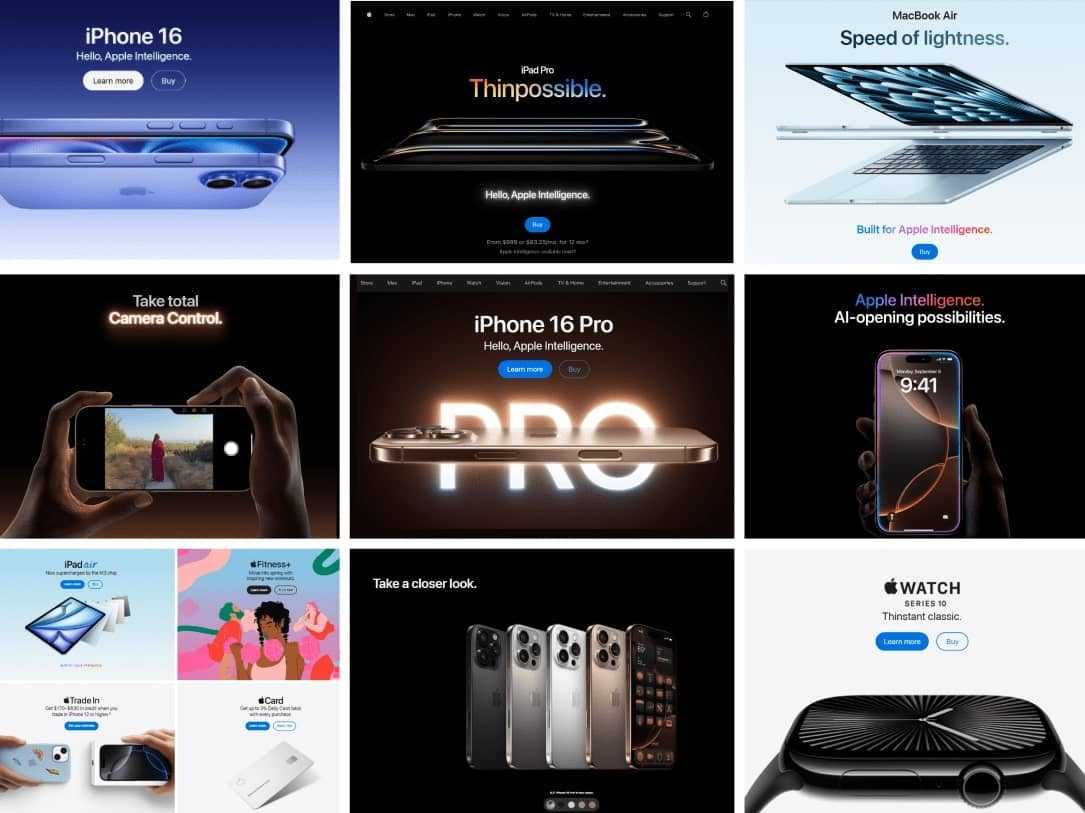

What are Microsites? Great Examples and Best Practices
Microsites Pack a Powerful Punch
Microsites flip the script – plain and simple. Forget the idea of “go big or go home.” Smaller can be smarter, and microsites prove it, driving big results with precision.
By zeroing in on specific audiences and narrow themes, they power targeted B2B and B2C campaigns for maximum impact.
Their popularity is growing in both spheres.
What is a Microsite?
![]() With only a few pages, microsites operate independently or complement an organization’s main website, temporarily supporting campaigns and events or serving as long-term hubs for specific audiences.
With only a few pages, microsites operate independently or complement an organization’s main website, temporarily supporting campaigns and events or serving as long-term hubs for specific audiences.
Microsite Showcase Simplicity, Agility, Ability

Just like a flash mob captures attention with a sudden, high-energy performance in a specific location, a microsite makes a bold statement in a focused digital space. Both engage their audience quickly and deliver a clear message.
Just as a flash mob event can be short-lived and leave a lasting impression, microsites often have a finite lifespan.
In each case, precision, timing, and engagement drive success, proving that a well-executed, focused effort can outshine something bigger and more complex.
Primary Features Define Successful Microsites and Examples
|
Feature or Objective |
Description |
Example |
|
Standalone Presence |
Operates independently or semi-independently from the main website. | The Longhorn Steakhouse microsite sizzled on a unique URL, serving up interactive games, expert tips, and mouthwatering recipes to fire up engagement beyond the main website. → |
|
Focused Messaging |
Keeps messaging and information streamlined to maintain user engagement. | The Haiku Fans microsite streamlined SenseME™ technology into an engaging, standalone presence independent of its Big Ass Fans brother. → |
|
Specific Purpose |
Designed for targeted campaigns, niche topics, or specific marketing objectives. | Adobe designed the Summit microsite to captivate audiences and elevate its digital experience event. → |
|
Flexible Lifespan |
It can be temporary for short-term campaigns or permanent for long-term initiatives. | The Snowman Builder delivers a fun, evergreen diversion highlighting DBS Interactive’s creativity and development skills. → |
|
Creative Freedom |
Allows unique design, branding, and interactive elements beyond the constraints of a primary website. | The Stratos microsite focused Red Bull’s extreme sports branding into an immersive, high-impact digital experience. → |
|
Performance Tracking |
Enables precise measurement of engagement, conversions, and other key performance indicators (KPIs). | The X-BAR site, like the print module itself, delivered high-speed performance—driving traffic, searches, and leads. → |
How Microsites Differ from Websites and Landing Pages
Microsites focus on storytelling and user engagement, websites serve as a primary business hub, and landing pages prioritize conversions with minimal distractions.
|
Aspect |
Microsites |
Websites |
Landing Pages |
|
Purpose |
Campaigns, niche topics, storytelling |
Comprehensive brand or business presence |
Conversion-focused, single call-to-action |
|
Scope |
Narrow, focused |
Broad, multi-faceted |
Extremely narrow, single goal |
|
Structure |
Independent or semi-independent |
Hierarchical, multi-level pages |
Single page |
Best Practices for Creating Microsites
![]()
Building a successful microsite requires balancing creativity with purpose – form, fashion, and function.
Success depends on the ability to captivate a specific audience, convey a focused message, and drive measurable outcomes. Businesses can ensure microsites achieve goals while delivering an engaging user experience.
Start with a Clear Purpose
Define the goal of your microsite, whether it’s awareness, lead generation, or community building. A focused objective ensures alignment in design and content.
Narrow the Focus
Limit the scope of the content to avoid diluting the message. Concentrate on a single topic or campaign to maximize impact.
Prioritize Responsive Design
Ensure your microsite performs well across all devices, especially mobile. A friction-free experience increases engagement and accessibility. Your microsite’s UX needs to be memorable for the right reasons.
Make Navigation Intuitive
Design simple, user-friendly menus to enhance usability and minimize confusion. Remember, less is more.
Use High-Impact Visuals
Invest in striking design elements and visuals that captivate attention and leave a lasting impression. Go for “wow.”
Optimize for Search Engines
Leverage niche keywords and adhere to on-page SEO best practices to improve visibility and search rankings. Also, squeeze out every ounce of organic search with technical SEO.
Measure Performance
Use analytics tools to track traffic, engagement, and conversions. Regularly evaluate performance metrics to optimize effectiveness.
The Value of Microsites
Microsites are a powerful tool for achieving targeted goals with creative freedom. Their ability to deliver personalized experiences and measurable results makes them indispensable for niche campaigns and specialized user engagement.
Ready to Create a Microsite?

Consider the possibilities of a microsite for your next campaign.
Contact us to help you define a strategy and build a microsite that can drive engagement and deliver results for your business.
Do you have more questions about microsites?
Contact Us for the answers.
FAQs
A microsite is a small, focused website designed for a specific campaign, topic, or audience. Unlike a regular website, which serves as a comprehensive hub for a business, a microsite has a narrow scope and independent or semi-independent functionality, often created for short-term goals like marketing campaigns.
A microsite can help your business deliver a focused message to a specific audience to achieve defined results without the distractions of your main website. Whether for a product launch, campaign, or event, microsites have the potential to boost conversions.
While both microsites and landing pages focus on specific goals, a microsite provides a broader narrative and interactive experience, often including multiple pages or features. In contrast, a landing page is a single, conversion-focused page designed to achieve one specific action, such as form submissions or purchases.
First and foremost, a microsite works best when it has a clear purpose—whether it's generating leads, promoting a product, launching a campaign, or engaging a niche audience. The other best practices focus on execution.
Keeping the content focused on a single topic or campaign.Prioritizing responsive design for optimal mobile and desktop performance.Using intuitive navigation and high-impact visuals.Optimizing for niche keywords to enhance SEO.Measuring performance using analytics to track engagement and conversions.
Don’t avoid over complicatethe design or messaging, confusing users, and diluting the focus. Ensure the microsite is mobile-friendly, as many users access these sites via smartphones. Additionally, do not neglect analytics, as tracking performance is essential for assessing the microsite's ROI and effectiveness.




